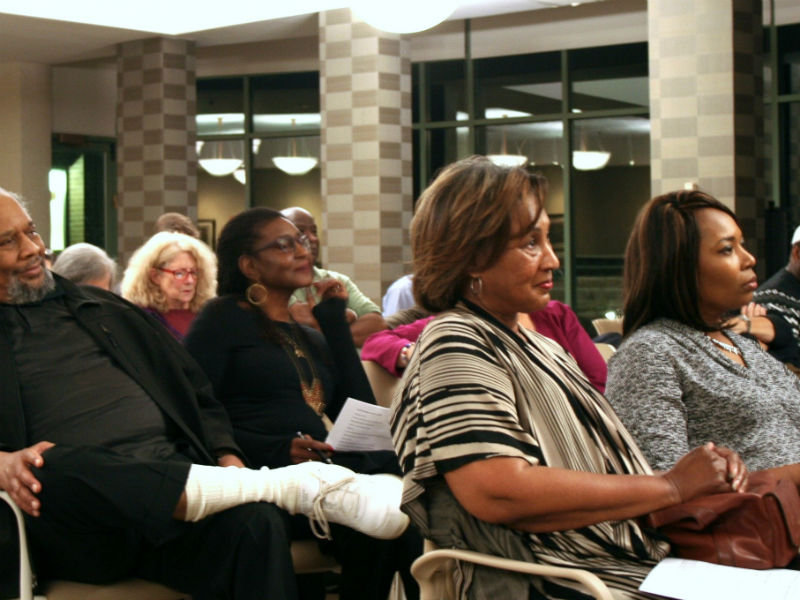The opinions expressed in this piece do not necessarily reflect the opinions of OnMilwaukee.com, its advertisers or editorial staff.
Madison police can’t catch a break. When they’re not being accused of being closeted or overt racists, the chief is terrifying a city official by showing up to a city meeting armed. He’s the police chief. Being armed is part of his job description.
That didn’t stop the alderman, though, from saying that he didn’t feel safe because Chief Mike Koval was sitting behind him at a meeting with a gun. Yes, that’s how bad things have gotten in Madison.
But where the critics really lose me is when they start trashing the police for using lawful force – especially non-lethal force designed to prevent out-of-control situations from escalating to lethal force. The critics lose me completely when they seem to argue that police should not take actions to protect themselves or the community from potentially dangerous people.
Currently, there’s an uproar in Madison over a citizen video in which police officers restrained a woman who had allegedly threatened people, and the officers themselves, in a mall. The CEO of the Urban League of Madison referred to the police restraint of the woman as savage, excessive and "barbarism."
The chief, who met with the 18-year-old woman’s family, said the officers have received death threats. A protest ignited calling for the officers’ arrest, as well as the woman’s release, and demanding the police keep their hands off black women. State Rep. Chris Taylor (D-Madison) called for a review and also said the police were "brutal." The woman has met with a lawyer, news reports say.
To restrain the woman, the officer punched her with a closed fist, struck her with his knee several times and tased her, in addition to putting a spit hood on her. Those actions are all listed in standard use-of-force training guidelines for police officers, by the way. As for a spit hood, officers use those to protect themselves from what could be dangerous bodily fluids of suspects. I thought people upset about police shootings were advocating that officers turn to tasers to prevent more lethal action, but now officers are being trashed for using them.
According to police (and, yes, their side would have to be proven in a court of law if the woman is charged – yes, a court of law, not the court of YouTube), the woman in question allegedly:
- Pointed a knife at a Taco Bell employee (I asked the Madison police spokesman for a description of the knife; he said, "The report refers to it as an approximately 4-inch butterfly/stiletto knife.")
- Made threats against the Taco Bell employee
- Made threats to kill mall security officers
- Spit in an officer's eye
- Scratched and kicked officers, injuring them
- Threatened to bite officers
- Was agitated, non-compliant and out of control
Use of force is never a pretty sight. That’s the bottom line. It’s hard to watch. Citizenry’s ability to capture misleading snippets of use-of-force incidents on cell phone video (out of context from what led up to them and unanchored from training guidelines, for example) can inflame people against any and all use of force. It’s good that the incident will now be reviewed. All use-of-force incidents should be subject to review because the cops don’t always get it right, and reviews are how training improves. However, if you review standard use-of-force continuums, it’s hard to see how this one will fall outside them, though time will tell, I suppose.
For example, the National Institute of Justice outlines how officers should progressively use force to restrain out-of-control people that have threatened other people or officers. It starts with their mere presence. Sometimes that defuses the situation. That didn’t work here. It escalates to verbalization, in which officers calmly ask for compliance. It then escalates to louder verbalization. After that, officers are allowed to use bodily force to "gain control of a situation."
The recommended soft technique includes using "grabs, holds and joint locks" to restrain individuals. This can graduate to a "hard technique" whereby officers are told to "use punches and kicks" to restrain the individual. The bottom line: The law doesn’t just allow, it mandates that officers restore social order when citizens are violating it in a way that threatens other people. That’s their job.
Officers then can graduate to less-lethal methods, such as using a taser (or pepper spray, a baton or projectile).
Finally, and notably this did not happen in the mall arrest, they can use lethal weapons to gain control of a situation if the suspect poses a serious threat to the officer or another individual (as occurs in police shootings).
Here you have two officers who appear, based on what we know at this point, to have followed national use-of-force guidelines to a T, stopping short of lethal force. You could argue that the non-lethal methods they employed prevented the situation from escalating to the point where the woman herself could have been seriously harmed or killed, as well as the officers or the public.
Indeed, a major collaborative study in Dane County on police use of force in 2016 outlined an almost identical use-of-force continuum as a way to prevent officers from using deadly force unless absolutely necessary. The continuum came from the Wisconsin Department of Justice’s training. It is called, "The Control Process: Disturbance Resolution model." And, yes, it also suggests and allows for "hard techniques" – such as punches and kicks – to retain control, as well as tasing.
Perhaps the Madison critics need training in use-of-force continuums. Perhaps they are saying it’s the national and state standards that are "barbaric," because you can hardly blame individual officers for following their training. However, the critics fail to outline what they, then, think police should do when they encounter armed, out-of-control, threatening, non-compliant people. Should they walk away? Should they do nothing? What if the person then harms someone else, themselves or the cop? It’s ridiculous to argue that police should never be able to use use-of-force beyond verbal command because it looks unsightly on YouTube.
According to one study on taser use by police, "Data reveals that these devices are beneficial for controlling noncompliant suspects while preventing serious injuries, and rarely has their use resulted in death." The study contains a similar description of the use-of-force continuum.
The Madison chief pointed out that the incident was 15 minutes long (the cell phone video just captured the tail end). He told the Wisconsin State Journal, "At the end of the day when called to deal with a behavior ... it is our obligation to restore order. That's what we do. When you ... spit in the eye of a police officer, that's a felony. When you resist arrest and you cause soft tissue injury to any officer, that's a felony."
Yes, sometimes police do violate their training and guidelines – which is bad – and this incident has not yet been fully investigated (because it just happened). But the critics of the Madison mall arrest have not provided any evidence that this restraint did not conform.
In other words, they are, for all practical purposes, calling for a society in which people can threaten other people and officers with impunity, and officers cannot use non-verbal tactics to force compliance when people simply refuse to obey their commands. Guess what? That would endanger cops AND the community (not to mention the suspects).
In other words, they are arguing for anarchy and a pliant, ineffective police force that must throw up its hands and give up in the face of law breaking. In other words, they want the police to forgo their mission to protect the community, upending the power imbalance in which police have authority over the citizenry when it comes to upholding the rule of law. In other words, it’s the rule of law under attack, not just in Madison (but certainly in Madison), but also throughout the country. That has consequence. There are some who believe that homicide spikes are related.
Maybe the message should be don’t bring weapons into malls. Don’t threaten people. Don’t spit at police officers. Don’t scratch or kick police officers. If a police officer tries to arrest you because you are completely out of control, comply. If you don’t think the arrest is fair, comply – and make your arguments in court.
To be sure, Madison has racial issues. Racial disparities in arrests should certainly be studied; however, I would not start with the premise that the disparities have occurred because police harbor inherent prejudice as a group (any more than any group harbors inherent prejudice, although every group has some individuals who may). There are many factors that can lead to arrest disparities, including root causes such as family breakdown, economic distress and disparities in victimization.
The Madison City Council wants to spend about $400,000 to study the police department, and one city leader said Wednesday the mall arrest proves the need for the expenditure, which has been hotly criticized by the chief – who has had his own moments of intemperate commentary, such as when he warned city officials they were being watched on his blog, which he said was hyperbole.
How does using lawful tactics prove the need to study a department, though? In the other hotly debated incident, the shooting death of Tony Robinson by a Madison police officer, the state’s first black district attorney was the one who found the shooting to be by lawful force.
The cops must wonder at some point whether Madison even wants a police force (but I assume they know that the quiet majority does). They must wonder at some point whether being a cop in Madison is worth it. I remember when we, as a society, believed that safety workers (cops, firefighters) were heroic public servants.
Remember after Sept. 11, when they were praised for running into the Twin Towers as everyone else was running out? I miss that attitude. That’s not to say all cops get it right. It’s to say that, as a group, we should not assume they do not absent concrete, properly contextualized evidence that they have not.
As the Wisconsin State Journal noted, "Madison police have worked hard to diversify their ranks while partnering with troubled neighborhoods."
We certainly shouldn’t argue that cops should be arrested for trying to protect themselves and the community by using non-lethal measures to restrain someone who is completely out of control and allegedly threatening other people.
Jessica McBride spent a decade as an investigative, crime, and general assignment reporter for the Milwaukee Journal Sentinel and is a former City Hall reporter/current columnist for the Waukesha Freeman.
She is the recipient of national and state journalism awards in topics that include short feature writing, investigative journalism, spot news reporting, magazine writing, blogging, web journalism, column writing, and background/interpretive reporting. McBride, a senior journalism lecturer at the University of Wisconsin-Milwaukee, has taught journalism courses since 2000.
Her journalistic and opinion work has also appeared in broadcast, newspaper, magazine, and online formats, including Patch.com, Milwaukee Magazine, Wisconsin Public Radio, El Conquistador Latino newspaper, Investigation Discovery Channel, History Channel, WMCS 1290 AM, WTMJ 620 AM, and Wispolitics.com. She is the recipient of the 2008 UWM Alumni Foundation teaching excellence award for academic staff for her work in media diversity and innovative media formats and is the co-founder of Media Milwaukee.com, the UWM journalism department's award-winning online news site. McBride comes from a long-time Milwaukee journalism family. Her grandparents, Raymond and Marian McBride, were reporters for the Milwaukee Journal and Milwaukee Sentinel.
Her opinions reflect her own not the institution where she works.







